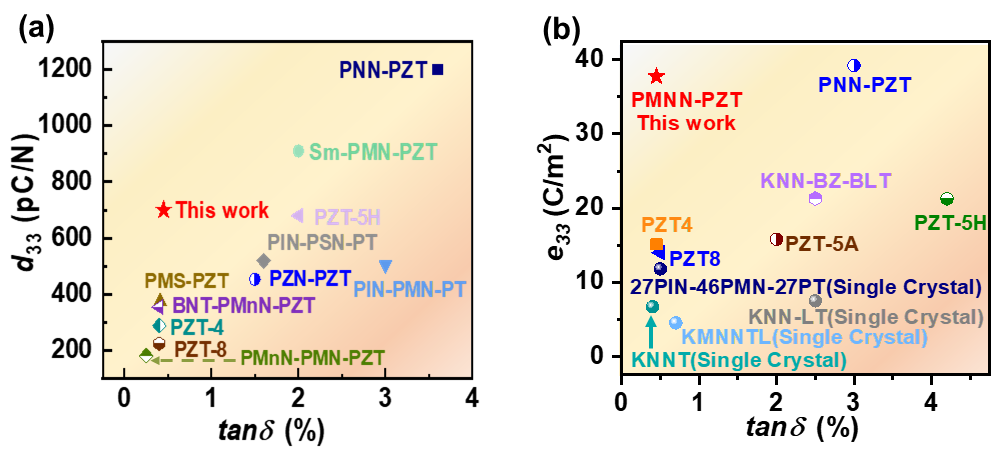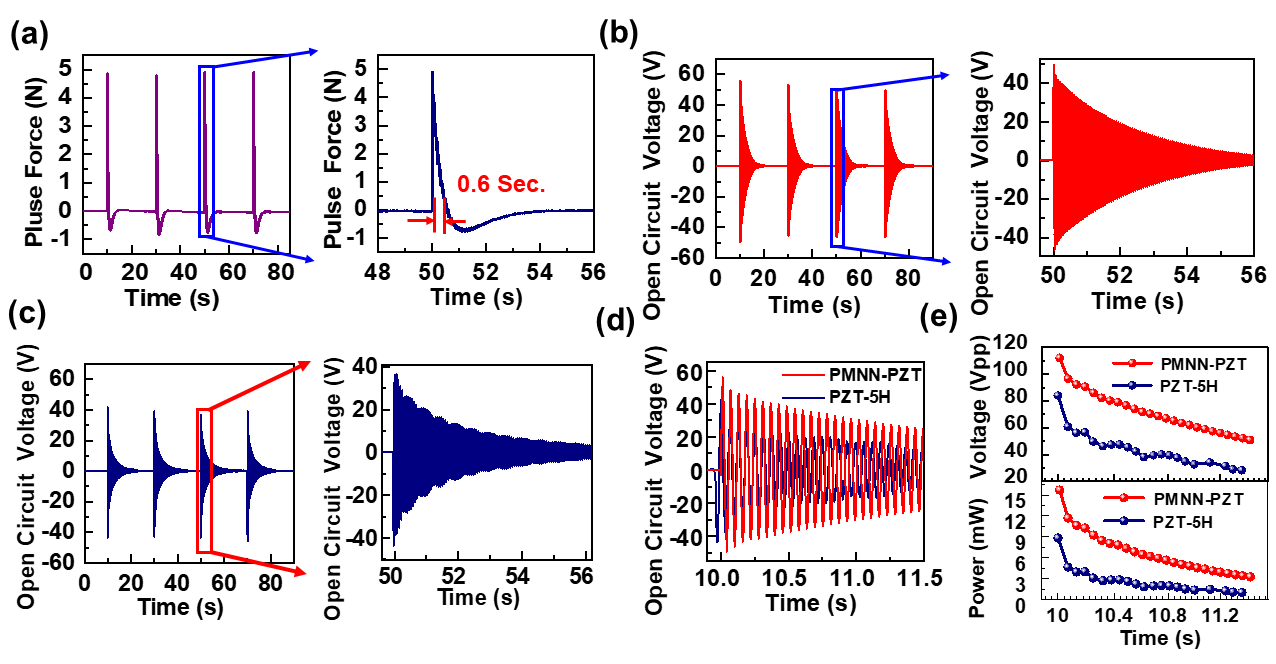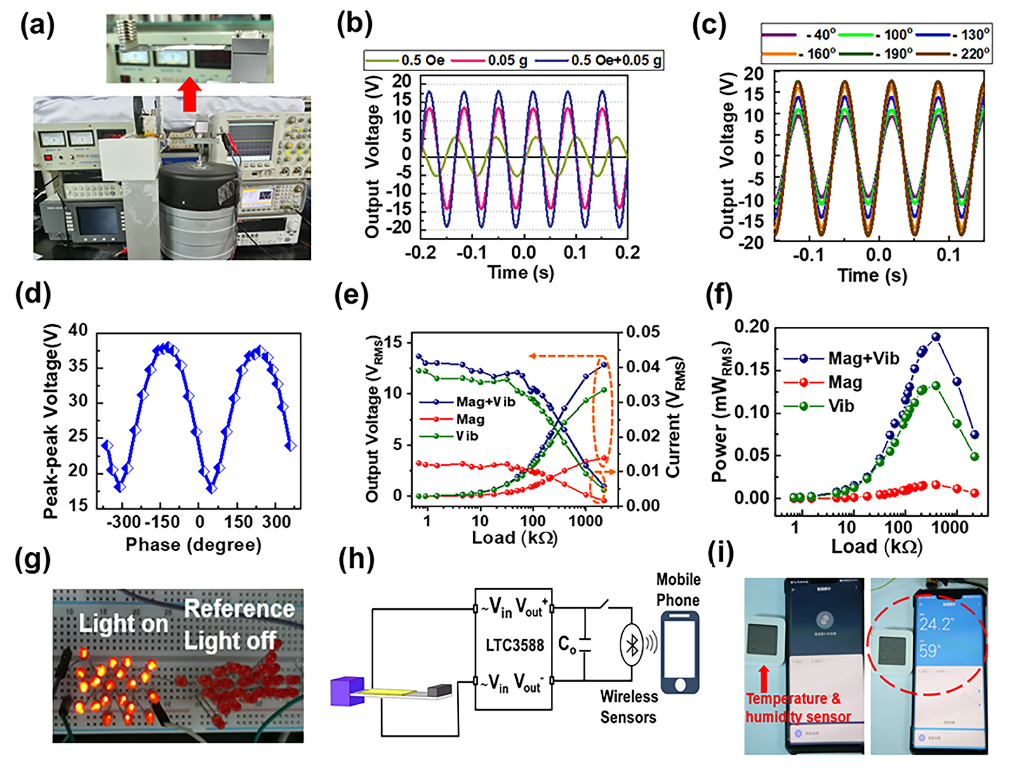Piezoelectric ceramic is one of important functional materials for electromechanical coupling. Piezoelectric ceramic is widely used for precision drive, intelligent sensing, movable electronics, communication and other domains, because it can realize the coupling of multiple physical fields to electric field, such as force-to-electric, heat-to-electric, magneto-to-electric couplings, etc. When it comes to piezoelectric devices operating in resonant state, such as piezoelectric transformers and energy harvesters, a high-performance piezoelectric ceramic with both high piezoelectric coefficient and low dielectric loss is highly required. However, the fabrication of piezoelectric ceramics with high-piezoelectric constant and low dielectric loss has been a challenging.
Recently, Professor Shuxiang Dong's group at School of Materials Science and Engineering, Peking University, assistant Professor Bian Lang (co-corresponding author), Harbin Institute of Technology, and Professor Qunyang Li, Tsinghua University, work together for developing both high-performance piezoelectric ceramic material and high-performance energy harvester. Based on the defect engineering method, they successfully prepared Mn-doped PNN-PZT piezoelectric ceramics (0.025Pb(Mn1/3Nb2/3)O3-0.525Pb(Ni1/3Nb2/3)O3-0.135PbZrO3-0.315PbTiO3) (PMNN-PZT). It has excellent comprehensive properties: the piezoelectric charge parameter e33 is 37.74 pC m−2 and the dielectric loss tanδ is as low as 0.45%. Compared with previously reported results, the prepared PMNN-PZT ceramic shows more superior performance, which is beneficial to the generation of high output power in magnetic-mechanical-electrical energy harvester energy harvesters (MME-EH).

Figure. 1 Comparison of the properties of PMNN-PZT piezoelectric ceramics and other reported piezoelectric materials
Moreover, a PMNN-PZT piezoceramic based MME-EH with a varying-stiffness cantilever structure and an attached magnetic tip mass was proposed. Under the random, pulse vibration or magnetic field excitation in the real-world, the proposed MME-EH exhibits a strong self-resonance effect. The experimental results show that under a randam excitation vibration with 0.6 s pulse width, the MME-EH can realize a self-resonant damping oscillation lasting for 6 s. Meanwhile, the maximum peak-to-peak power of 15.7mW could be generated by the proposed MME-EH during the randam excitation vibration process.

Figure. 2 Output Power performance of variable stiffness structured MME-EH based on PMNN-PZT ceramics/commercial ceramics under pulsed vibration.
In the real word, such as a car on the highway, the rotation of the wheel will produce both weak vibration and weak magnetic field. Therefore, it is meaningful to evaluate the output performance of the proposed MME-EH based on PMNN-PZT ceramics in this work under the excitation of both weak vibration and weak magnetic field. The peak-to-peak power density of about 480 mW Oe-2g-2cm-3 can be generated by the proposed MME-EH under the dual-stimulus of (Hac = 0.5 Oe, a = 0.05 g). It is one to two orders higher than the previously reported results. The generated output power can successfully drive the commercial temperature/humidity sensor in real time. The results show that the proposed MME-EH based on PMNN-PZT ceramics has great potential for wireless self-powered application under weak vibration and weak magnetic field in the real environment in the future.

Figure. 3 The power output of the proposed MME-EH based on PMNN-PZT ceramic under the simultaneous excitation of weak magnetic field and weak vibration, and the demonstration of powering temperature and humidity sensors by the proposed MME-EH.
The above result was recently published on Advanced Functional Materials. The first author of this paper is Yu Zhonghui, a doctoral student from Peking University, grade 2020, and Professor Dong Shuxiang is the corresponding author of this paper.
The link of this paper:https://onlinelibrary.wiley.com/doi/epdf/10.1002/adfm.202111140.